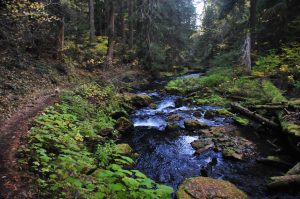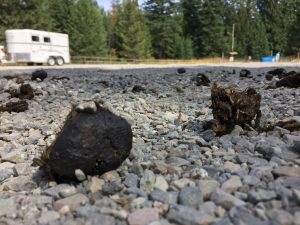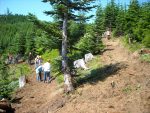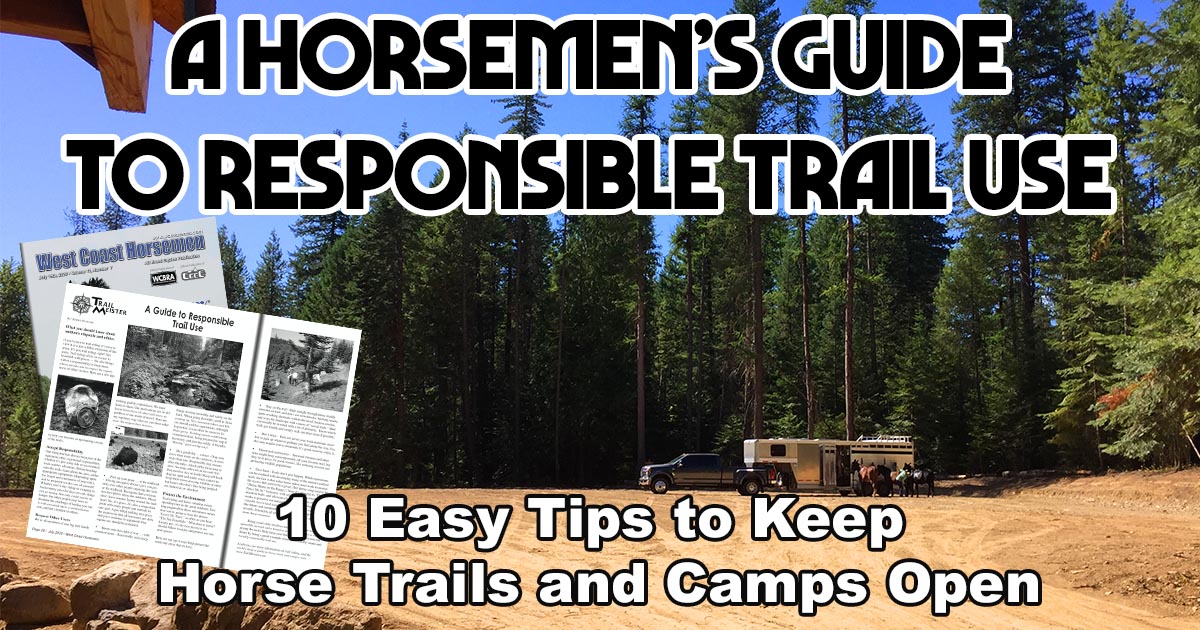A Horsemen’s Guide to Responsible Trail Use
What you should know about responsible trail use through appropriate outdoors etiquette and ethics through this “Horsemen’s Guide to Responsible Trail Use.”
As published in West Coast Horsemen magazine – July 2020

You can help keep areas like this open to Equine Use
If you’re new to trail riding, it’s easy to view it as just a hillier extension of the arena. It’s just trail riding, right? Not quite. Trail riding offers an escape to beautiful, wild places — but also brings with it a responsibility to keep those places pristine and to respect the experiences of other visitors. Here are a few tips to help you become an upstanding citizen of the trails.
Accept Responsibility
One thing that has always been part of the equestrian ethic is personal responsibility, whether it’s just a day ride or an extended back country adventure.
Before heading onto the trails, learn about the area, gather appropriate equipment (Such as these Essentials for Every Trail Ride) and be prepared to take care of yourself. Whether you’re day riding or camping in backcountry areas for days on end, things can go wrong. Not only could you be in danger, but other people may have to shoulder the challenge of bailing you out of trouble. A well-executed trip is a satisfaction to you and not a burden to others.
Respect Other Users
We’re all members of one big trail family seeking quality experiences. We must learn to share. Our motivations are no different from those of other trail users regardless of our mode of travel. Here are my top three ways that we can show other users the respect they deserve.

This causes trails to be closed to stock.
Pick up your poop … at the trailhead – Having an equine doesn’t give you priority over other people enjoying the trails or the trailhead. Recognize that everyone has the right to enjoy the outdoors. Please don’t leave manure laying around the trailhead. Yes, it’s grass. It’s also a congestion point with many people and animals in one spot. A poo filled parking area gives the impression that all horsemen are slobs and gives credence to arguments that equine use should be restricted.
Know who has right of way … with common sense – Basic traffic rules keep things moving smoothly and safely on the trails. When going downhill, yield to those coming up. Yes, mountain bikers and hikers should yield to equestrians, although, in practice, it can often be easier to let them go by. Yielding means establishing communication, being prepared to stop if necessary, and passing safely. A friendly “howdy” goes a long way!
Be a good dog … owner – Dogs can leave their mark on the outdoors, in more ways than one. Responsible dog owners obey the rules, which differ from area to area. Are dogs allowed on the trail? Do they need to stay on leash? Keep off-leash dogs in sight and under voice control to keep them from stressing wildlife — or other trail users who don’t like being jumped on, barked at or attacked.
Protect the Environment
Trail riding and horse camping means spending time in the great outdoors. Being prepared for those adventures means that you’re going to hear the phrase “Leave No Trace” as often as you hear “the Ten Essentials.” What does it mean? Simply put, it’s the best practices we should follow to enjoy and protect our natural spaces.
Here are my top 4 ways help protect the trails and areas that we love.

When you see this on the trail. Pick it up.
Stay on the trail – Ride straight through those muddy stretches of trail, and don’t cut switchbacks. Skirting mucky spots or taking shortcuts widens the tread, hastens erosion and scars the landscape with a maze of “social trails.” Avoid mud with a bit of planning. Know which trails get muddy and simply seek out drier areas if possible.
Don’t litter – Pack out all of your trash and make an effort to pick up whatever garbage you find along the way. Yes, this may require to you to dismount. It’s good exercise, enjoy it.
Honor trail restrictions – Seasonal closures and other rules might keep you temporarily off your favorite trail, but they’re in place for good reasons, like reducing erosion and protecting wildlife populations.
Give back

Back Country Horsemen of Washington – Building part of the Pacific Crest Trail
Horse Trails don’t just happen. Although equestrians can be credited with developing many of the nation’s earliest trails, the fact is that today horse riders must work to protect the access that used to be a given. Our theme song used to be “Home, Home on the Range,”. The tune has changed to “Don’t Fence Me In.” Volunteer with organizations that build and maintain trails, and advocates for equestrian use, or otherwise works to preserve our natural spaces. Volunteering also builds valuable ties to land managers and to other trail-user groups, like hikers and mountain bikers. Every user group has a stake in trails. It benefits all of us in the long run to get along and share these resources.
Being a trail rider involves understanding how to be a responsible steward and a friend to everyone else who is out enjoying the trails. Keep your horse trails open far into the future by being a good example of environmentally sound and socially responsible trail use. Please share this Horsemen’s Guide to Responsible Trail Use with others to help keep your trails open.
As always for more information on trail riding, and the world’s largest guide to horse trails and camps, visit www.TrailMeister.com


